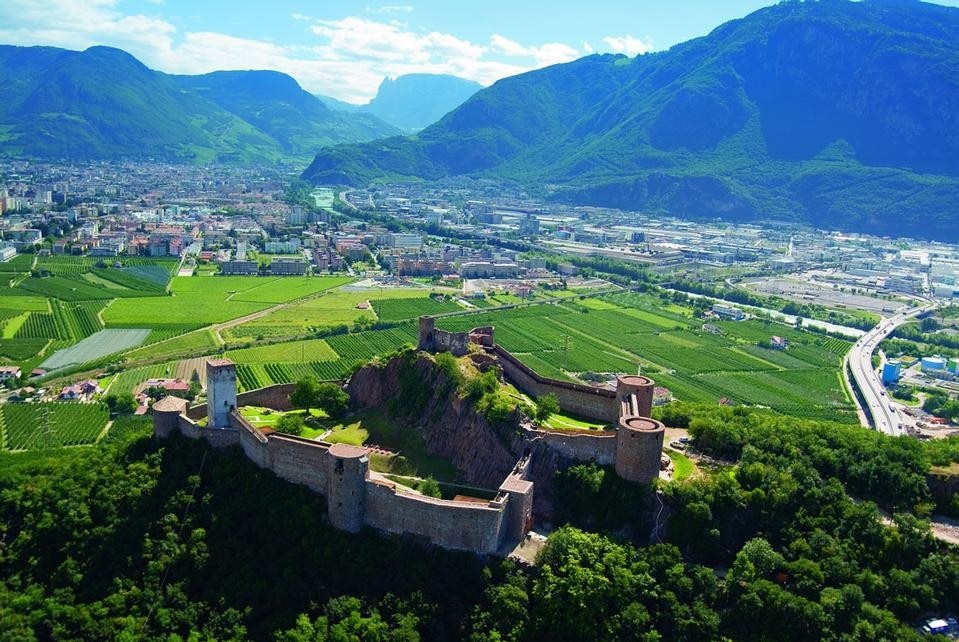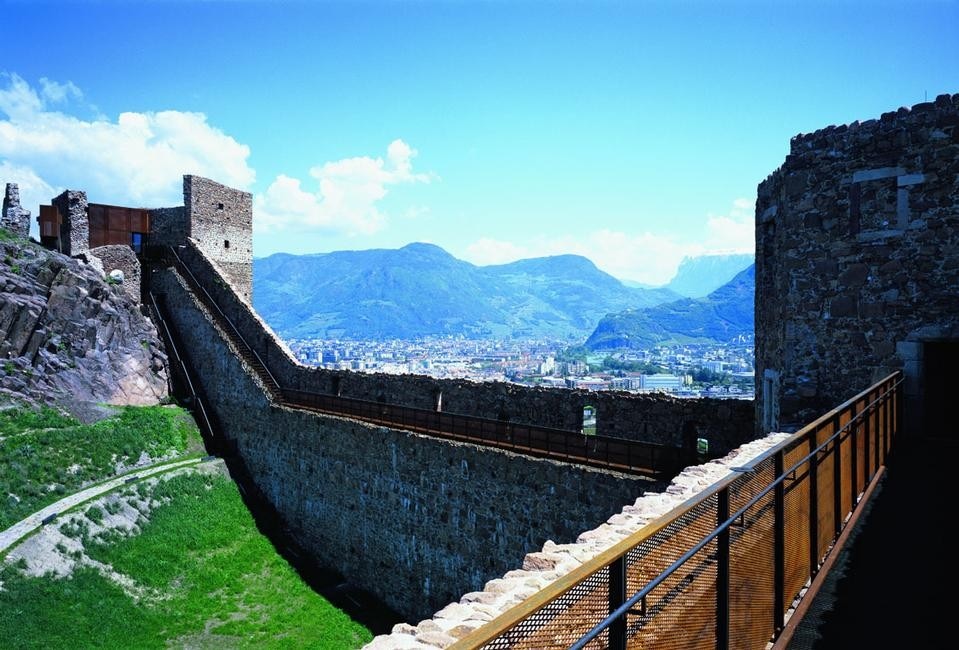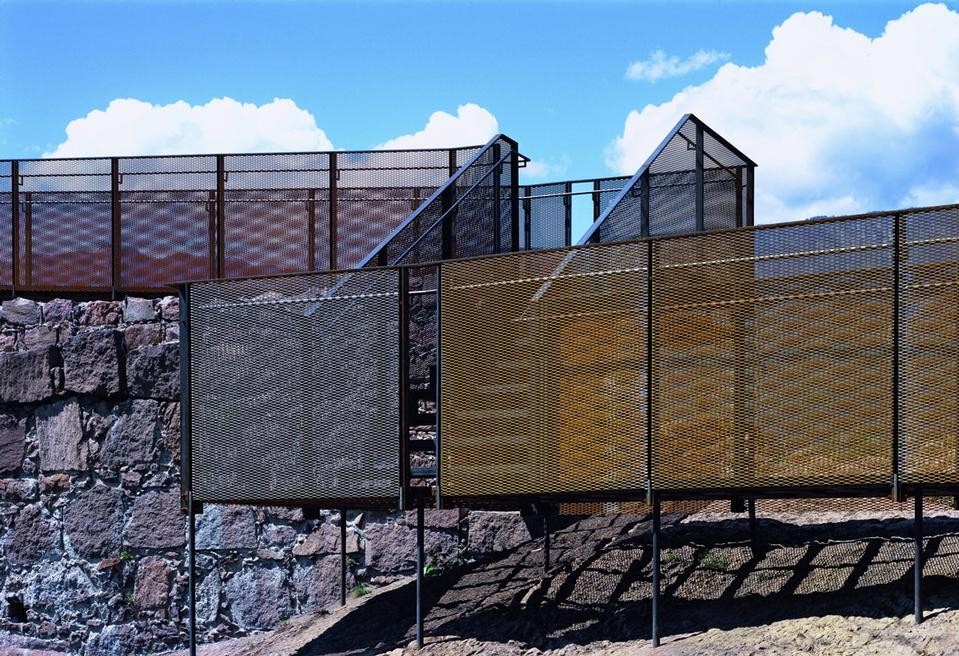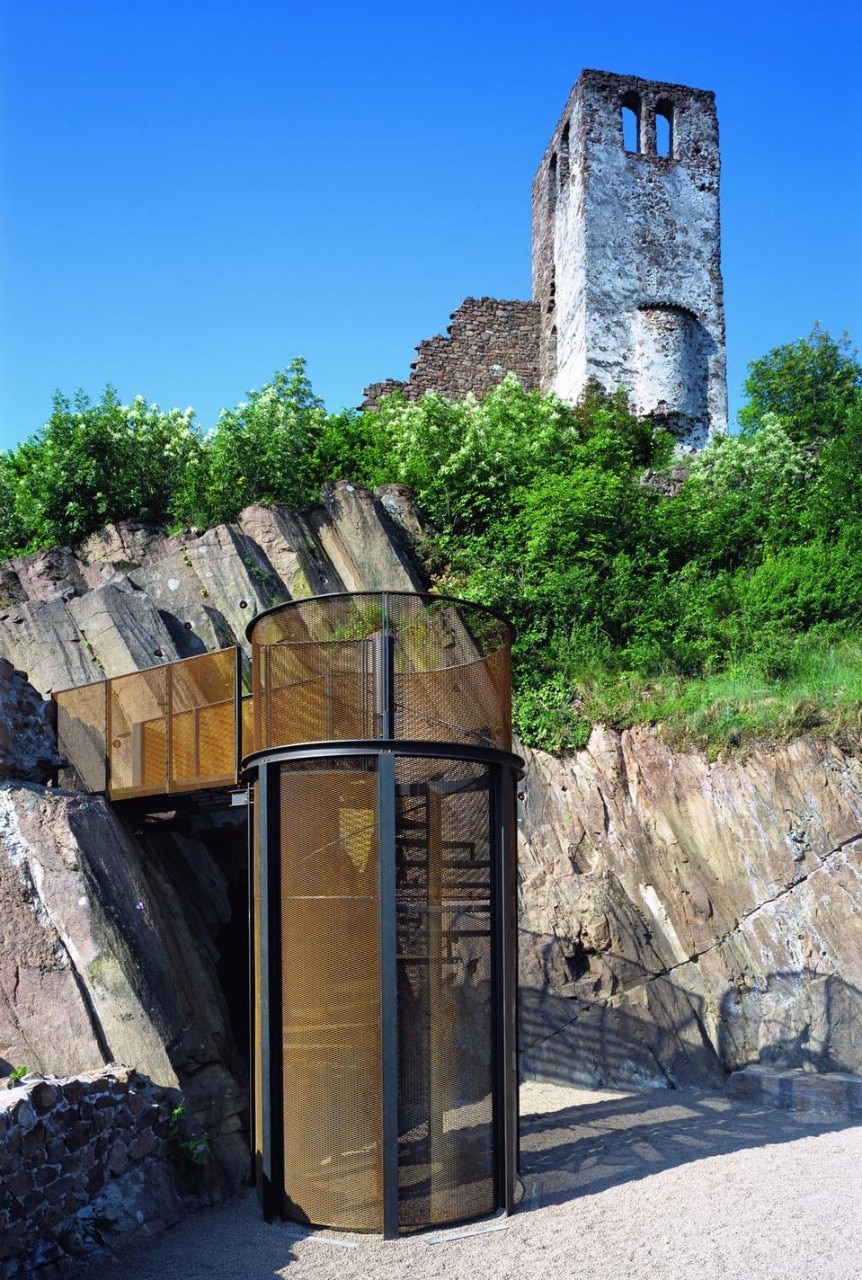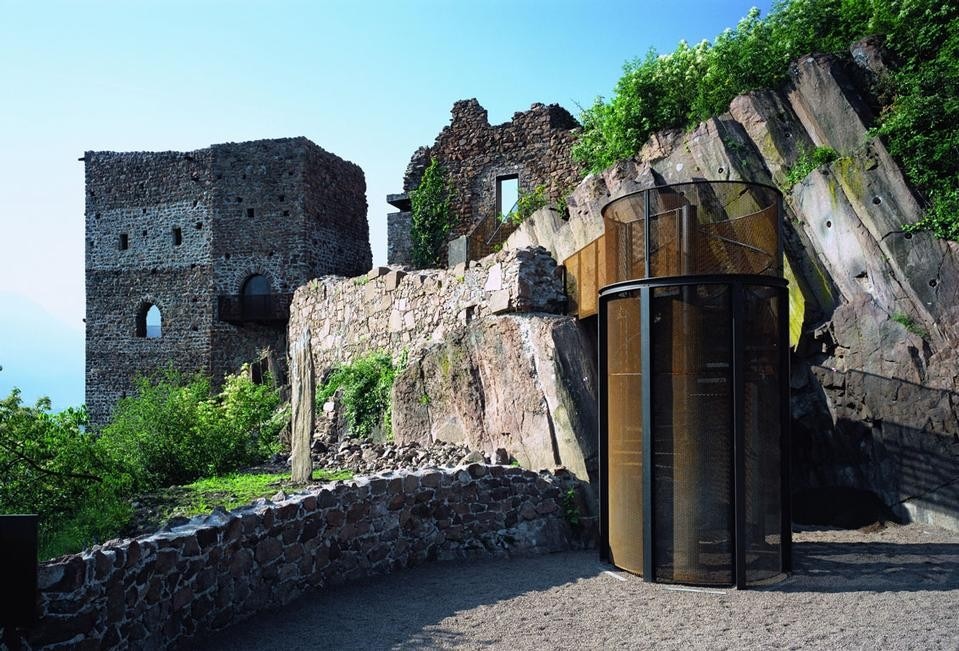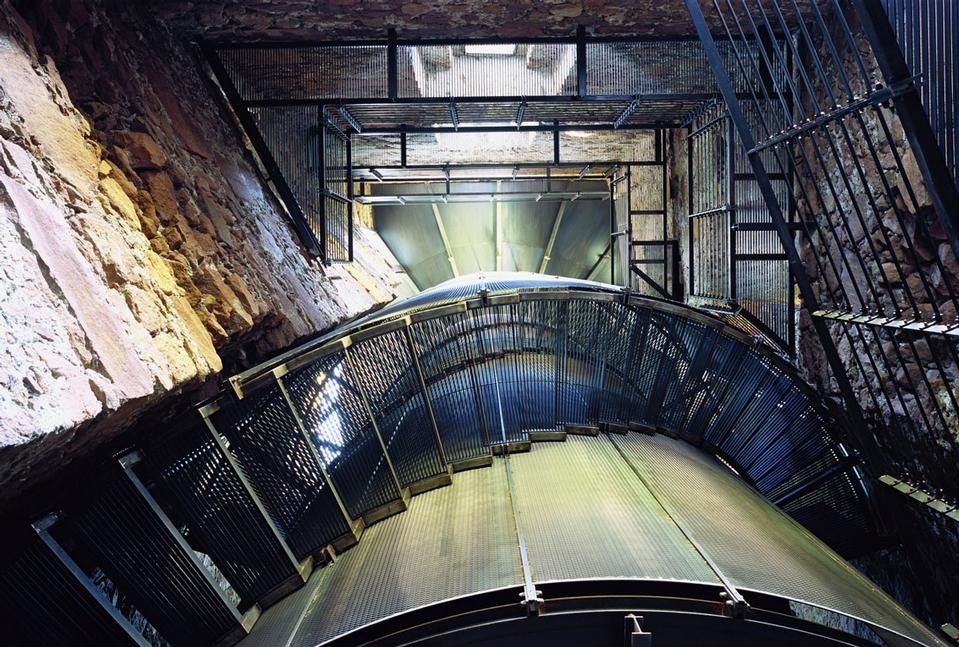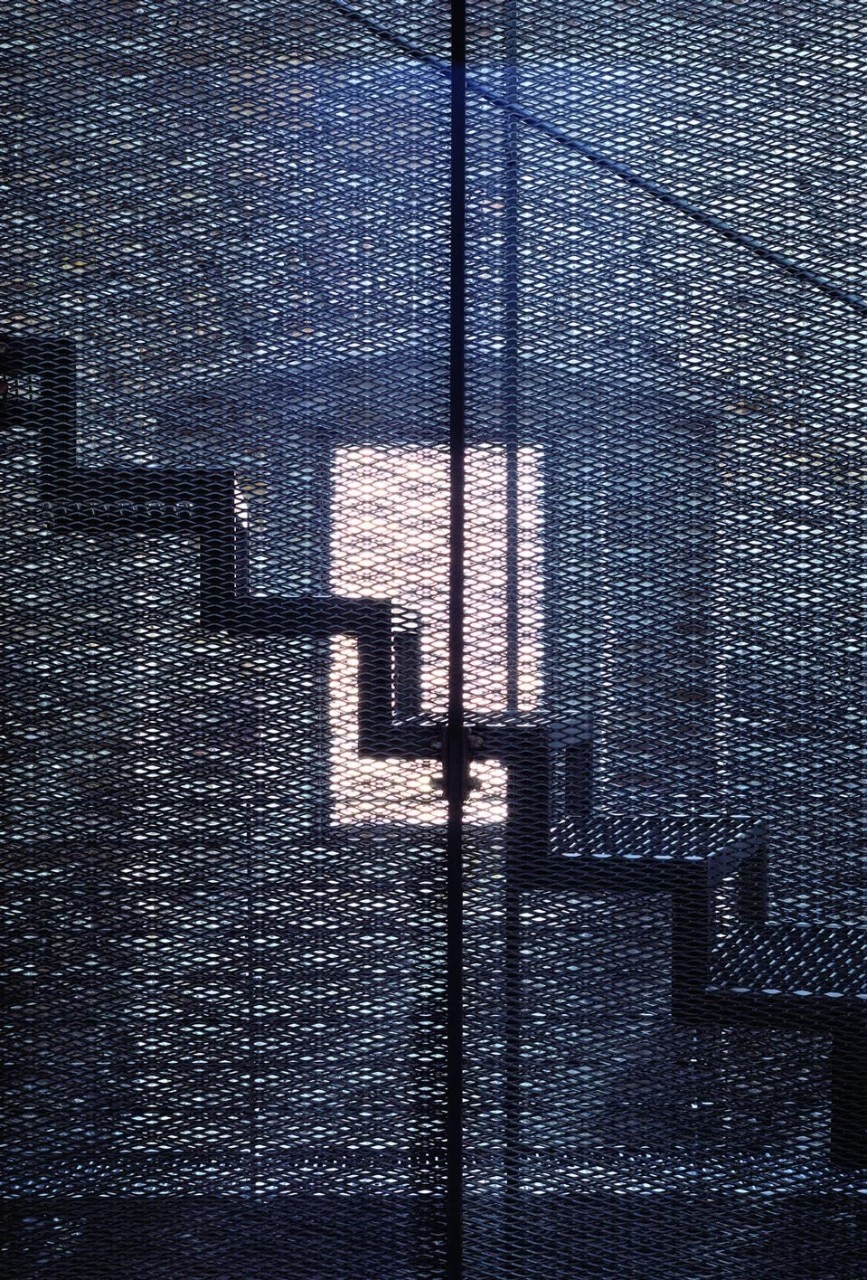Alongside the main entrance to the castle is a new building for the museum shop, the services and the caretaker’s apartment. In the adjoining building, to the west, a new restaurant has been planned. The original shape of the mono-pitched roof has been retained, sitting on the perimeter wall, enabling the space under the roof to be converted into a large space for temporary exhibitions. In what is known as the White Tower a steel structure has been suspended from the roof beams, with the illustration on numerous levels of the history of Castel Firmiano. The exhibition route of the museum begins in the north tower and leads, through the north courtyard and the stone theatre, to the four-storey palace, integrated in the eastern perimeter wall. Above this, towering on a rocky ledge is the inaccessible and older nucleus of the stronghold, with remains of the Roman chapel. On heavy blocks of porfido stone of the eastern perimeter wall runs a walkway in red rusted steel, that reveals from up high the view of the valley and the surrounding mountains. A transparent mesh in expanded metal that, if seen from afar seems to dissolve against the blue of the sky, sits and supports the visitor.
In the cylindrical south towers, metal structures have been suspended, detached from the outer walls. The wax-polished steel stands out before the light that skims the stone walls. At the end of the museum route, a well dug into the rock connects the southern courtyard of the castle and the entrance tower, the starting point for the visitors' route. The masterly architectural salvaging of the ruins of the castle may perhaps contribute to opening up once more this important access to contemporary history.
Castel Firmiano restoration and Mountain Museum
Design: Werner Tscholl
Client: Provincia Autonoma di Bolzano
Realization: 2003 – 2006
